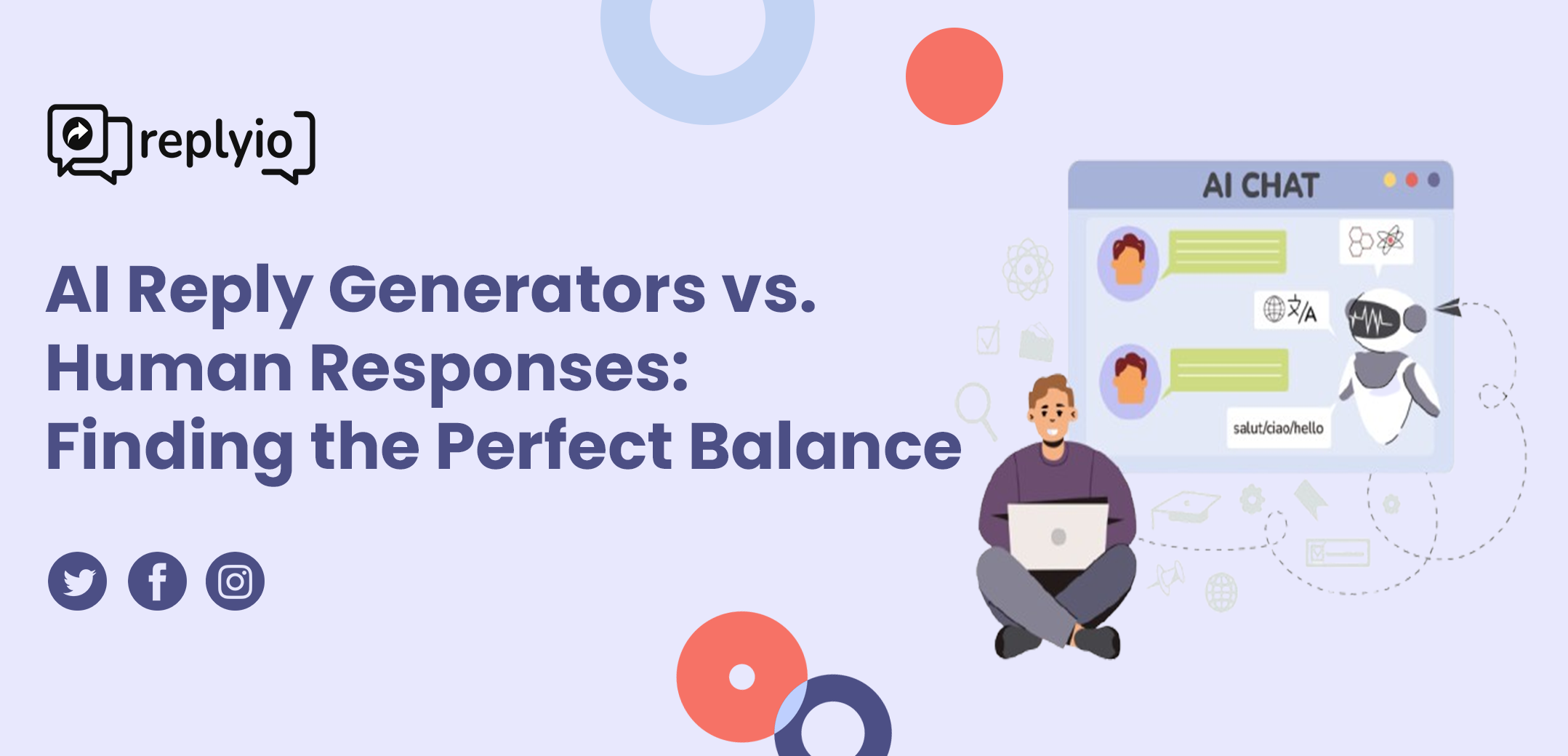Replyio
AI Reply Generators vs. Human Responses: Finding the Perfect Balance
-
Aug 1, 2024
-
8 min read

In today’s fast-paced digital landscape, businesses and individuals are constantly looking for ways to improve efficiency, especially in communication. AI-powered reply generators have emerged as an attractive solution, offering a way to respond quickly and consistently. However, while automation can save time and boost productivity, there are situations where human responses still reign supreme.
So how do we strike the perfect balance between AI-generated replies and human intervention? Let’s explore the key factors that can help us navigate this balance effectively.
The Rise of AI in Communication
AI reply generators have advanced significantly in recent years, becoming smarter, more accurate, and capable of replicating human-like responses. From chatbots and email assistants to social media replies, AI tools can handle a variety of tasks, including:
1. Speedy Replies:
AI-generated responses are instant, helping businesses and individuals reply to customers or clients in record time.
2. Consistency:
AI ensures a uniform tone, preventing inconsistent communication that can confuse customers.
3. Scalability:
AI tools can handle hundreds or even thousands of interactions at once, something a human team cannot easily manage.
4. Cost Savings:
Reducing the need for a large customer support team by automating common inquiries can significantly cut operational costs.
Given these benefits, it’s easy to see why companies are increasingly relying on AI to handle their communication channels.
The Limitations of AI-Generated Replies
Despite the many advantages, AI still has limitations. While it can handle simple tasks with ease, it struggles with nuance, empathy, and the intricacies of complex situations. Here are some limitations where human responses still shine:
1. Lack of Empathy:
AI can replicate polite language, but it cannot genuinely understand emotions or offer empathy. When a customer has a complaint or is upset, a robotic reply can feel cold and impersonal.
2. Contextual Understanding:
AI sometimes lacks the deeper context that humans bring to a conversation. For example, an AI might respond correctly to a question but fail to grasp the underlying issue the customer is trying to convey.
3. Complex Problem-Solving:
When issues become too complex or require creative problem-solving, human input becomes crucial. AI might offer general suggestions, but it can't think outside the box in the same way a human can.
4. Brand Voice:
AI tools are trained on large datasets and can sometimes miss the unique tone or voice of a particular brand. Humans, on the other hand, can adjust their tone, humor, and language to match a brand’s personality.
Finding the Right Balance: Best Practices
1. Automate Routine, Repetitive Tasks
For inquiries that follow a predictable pattern—such as FAQs or status updates—AI is perfect. These simple responses free up human agents to focus on more complex issues. You can also set up automated follow-ups or reminders, so routine tasks don’t fall through the cracks.
2. Humanize When Necessary
For customer concerns that involve emotion or a deeper understanding, human intervention is key. Empathy, creativity, and problem-solving are areas where people naturally excel, and they should be prioritized in scenarios where AI falls short.
3. Use AI as a First Point of Contact
AI can work as a helpful triage tool. It can handle basic queries and escalate more complicated issues to human agents when necessary. This approach saves time without compromising quality. For instance, chatbots can handle initial troubleshooting steps and pass on more challenging tasks to humans if the problem persists.
4. Customize AI to Fit Your Brand
Most AI reply generators offer customization options. Brands should train AI models on their specific tone of voice, preferred phrases, and customer interaction styles. This way, even when AI takes over, it still feels on-brand.
5. Monitor and Improve
Even the best AI models need regular monitoring and updates. Analyze performance data to see where AI succeeds and where it fails, then adjust accordingly. It's also important to get customer feedback to see how satisfied they are with AI-generated responses.
When AI Meets Human Intelligence: A Hybrid Approach
The future of communication will likely see a hybrid model that combines the strengths of both AI and humans. AI tools will continue to evolve and handle more complex tasks, while human workers will focus on areas that require emotional intelligence, creativity, and personal connections.
By using AI to streamline processes and humans to add the emotional touch, businesses can provide the best of both worlds: efficiency and genuine engagement. Ultimately, it’s about leveraging the right tool at the right time.
Striking the right balance between AI-generated replies and human responses is key to providing effective communication. AI can handle routine tasks with ease, but humans are still irreplaceable when it comes to empathy, creativity, and brand personality. The perfect balance will depend on the needs of your business or personal brand, but a hybrid approach that blends the strengths of both AI and humans is likely the best path forward. By integrating the two thoughtfully, we can ensure that technology enhances, rather than replaces, the human touch.

